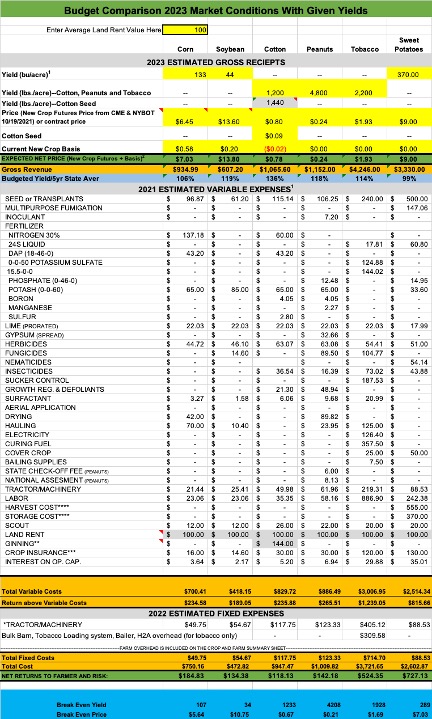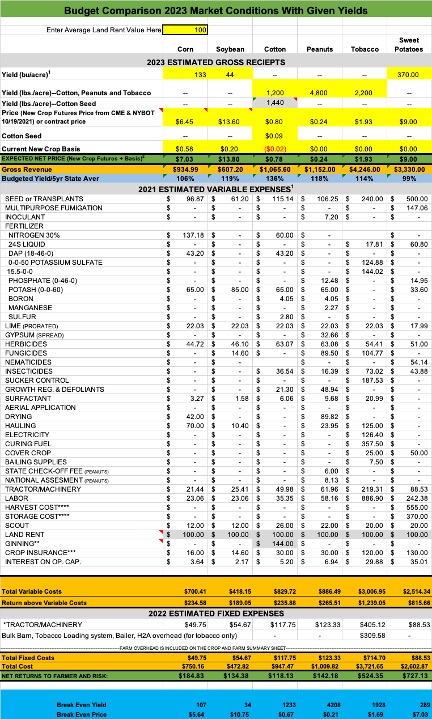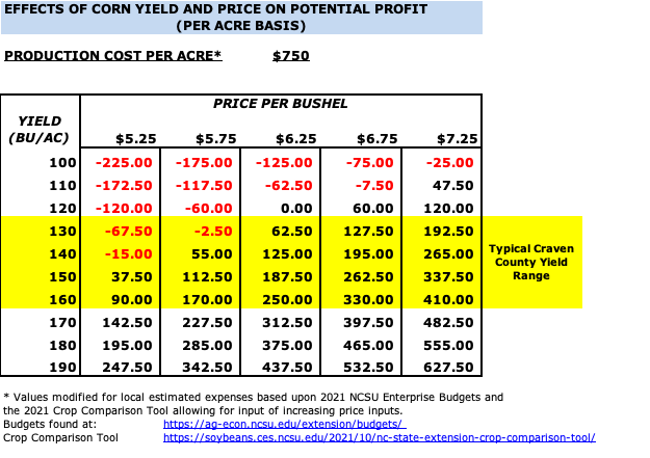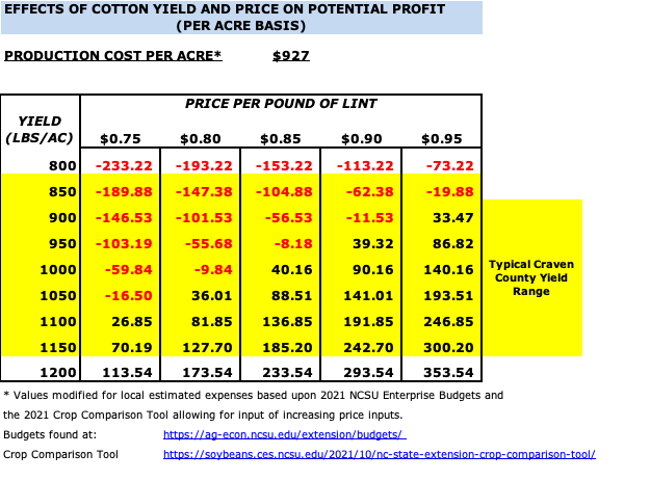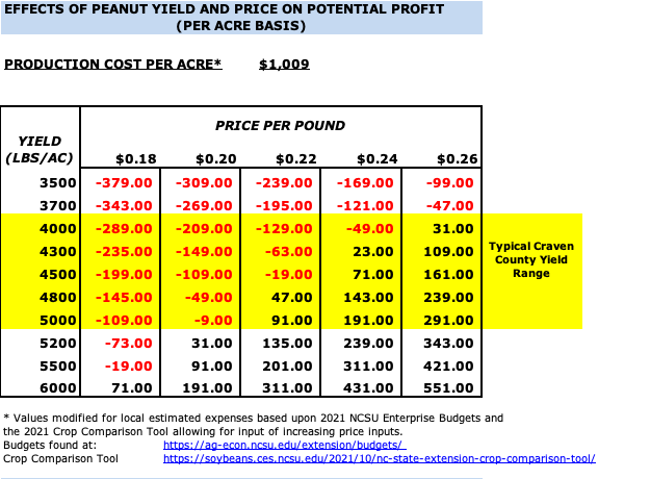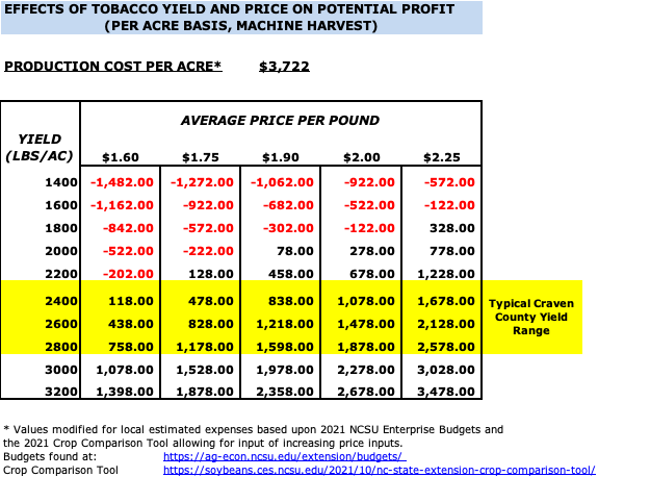Using Realistic Yield Goals and Budgets for Break-Even Analysis
go.ncsu.edu/readext?906709
en Español / em Português
El inglés es el idioma de control de esta página. En la medida en que haya algún conflicto entre la traducción al inglés y la traducción, el inglés prevalece.
Al hacer clic en el enlace de traducción se activa un servicio de traducción gratuito para convertir la página al español. Al igual que con cualquier traducción por Internet, la conversión no es sensible al contexto y puede que no traduzca el texto en su significado original. NC State Extension no garantiza la exactitud del texto traducido. Por favor, tenga en cuenta que algunas aplicaciones y/o servicios pueden no funcionar como se espera cuando se traducen.
Português
Inglês é o idioma de controle desta página. Na medida que haja algum conflito entre o texto original em Inglês e a tradução, o Inglês prevalece.
Ao clicar no link de tradução, um serviço gratuito de tradução será ativado para converter a página para o Português. Como em qualquer tradução pela internet, a conversão não é sensivel ao contexto e pode não ocorrer a tradução para o significado orginal. O serviço de Extensão da Carolina do Norte (NC State Extension) não garante a exatidão do texto traduzido. Por favor, observe que algumas funções ou serviços podem não funcionar como esperado após a tradução.
English
English is the controlling language of this page. To the extent there is any conflict between the English text and the translation, English controls.
Clicking on the translation link activates a free translation service to convert the page to Spanish. As with any Internet translation, the conversion is not context-sensitive and may not translate the text to its original meaning. NC State Extension does not guarantee the accuracy of the translated text. Please note that some applications and/or services may not function as expected when translated.
Collapse ▲Examine the two proposed budgets with varying yields below. First realize that at higher yields, all crops provide a profit. However, cotton’s total production cost is among the higher of the crops total production cost yet the return is low for such an investment. As such, unless one anticipates higher cotton prices, higher cotton yield, or reduced production costs, fewer production acres of cotton is a consideration. All crop production plans should be evaluated for return of investment given a reasonable yield and price range with high probability of occurrence. Failure to evaluate these factors could result in devastating consequences.
NC State has developed a Crop Comparison Tool that makes such comparisons easy. For the first budget, reasonable crop yield was used while the other has the same input but for lower yield. Note that as yields are decreased, cotton and peanut shows a loss. Too, while corn and soybean are still profitable, the difference between profit and loss Is only a bushel or two. So, there is little room for any additions to the proposed budget. Note too, that at lower yield, the break-even prices are now higher. Combined with the fact that historically, adverse weather usually negatively impacts at least one crop that we grow, this creates additional risks to manage.
One critical point all this data show is that one must examine every production input. If the input Is not providing profit, it is worthless. While one can increase yield through multiple means, doing so without adding profit is wasted effort. Similarly, failure to accept that some soils simply will not produce the desired targeted yield goals is a wasted effort. This is readily seen in the break-even charts that follow. Note that for corn production of 120 bu/ac sold at $6.25/bu has no profit. The investment of over $700/ac should have been spent elsewhere! Personal records over time are an excellent source of reasonable yield. If this data is not available, review the historic yield based on climate and soil type at Realistic Yield Expectations for North Carolina Soils
Hopefully, this information below will aids in making decisions for production in 2023. Simply realize these are simply projections and may be a bit higher than your actual production expenses. Each producer’s values will differ. If you would like assistance entering your data into the budget for a more accurate assessment, simply call or email your local NC Extension Office. We will be glad to enter your data for similar analysis.





